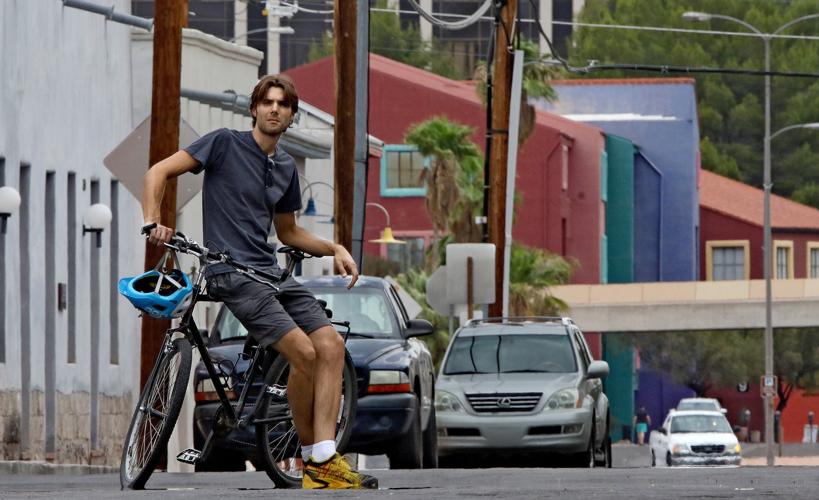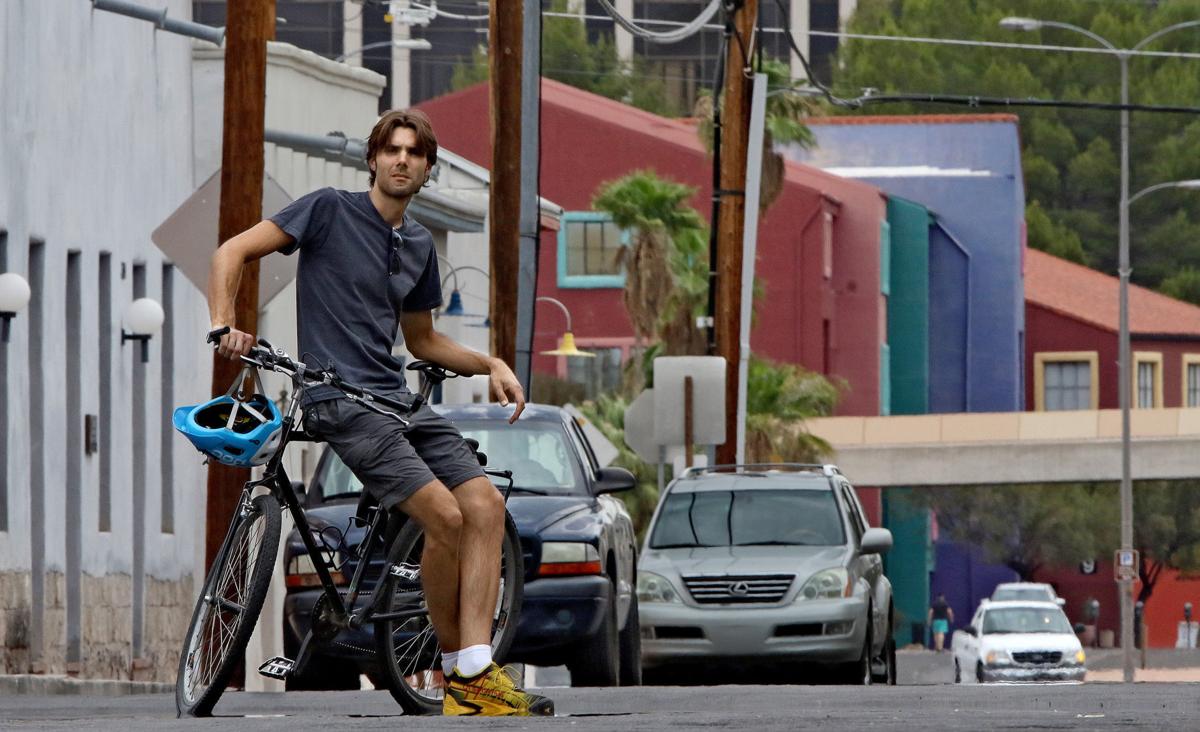What defines Tucson as a place?
Luminous mountains and desert? The few remaining Sonoran row houses in the gentrifying downtown barrio? Is it the image of stucco suburban expansion that rings Tucson or the ribbons of cracked and pitted asphalt that crisscross the city?
Tucsonans have different definitions, depending how long they have lived here or if they were born here. Some people can’t define Tucson beyond their immediate surroundings and daily life. Yet others have not given it one iota of thought.
Aengus Anderson, an independent radio producer, has given it lots of thought, so much so that he has created “Tucsonense,” a podcast in which he explores and defines Tucson as a place — his and yours. Tucsonense is the Spanish word for Tucsonan.
The 34-year-old Anderson, who left Tucson when he was 18 and returned 10 years later, lived and worked in Chicago, Portland and San Francisco, where he explored the meaning of place. The subject fascinates him.
The one place he had not dug into deeply was his hometown.
“I really wanted to do something local,” he said during our conversation outside the University of Arizona Main Library, where he works as a media producer. He also creates video for a UA online site.
“Adobe row houses huddle along narrow streets, smeared with colorful stucco like sunscreen against the relentless light. And stucco, like sunscreen, is in a state of constant failure, ever in need of another application. Over the years, layers of plaster accrete and, upon each of them, multiple layers of paint. Lead. Oil. Latex. If you pulled a chunk of plaster off one of these old houses, you could look at its cross section and read it like tree rings, the layers extending back to mud, back to the beginning of Tucson,” begins Episode 2 at www.tucsonense.com
Anderson, who lives on the west side near Tumamoc Hill, said it was an obvious decision to focus his attention on Tucson, of which he knew little about while growing up in the Foothills. He owed it to himself, he added. It’s personal but he wants to share his observations and commentaries.
“What is the essence of Tucson and Southern Arizona? What, and who, makes it unique? To discover this, I’ll talk to people who have made Tucson what it is, in ways both obvious and subtle. I’ll dive into the archives, which is as close as you can get to interviewing the dead,” he says.
So far the nascent project has two episodes.
Episode 2 is an introduction to his project, while in Episode 1 he pays homage to the source of the name of his podcast — El Tucsonense, the city’s leading Spanish-language newspaper, which existed from 1915 to 1962. For most of its life the newspaper was produced in a corner building — which today is Old Pueblo Printers — at South Stone Avenue and East McCormick Street. The newspaper was started by Francisco S. Moreno and after he died in 1929, his widow Rosa Elías Moreno was the publisher.
“So Old Pueblo Printers stands here on the threshold of three eras of development and it’s easy to ignore the building just as it is easy to forget about Tucson’s past, just as it was easy to ignore past Tucsonenses,” Anderson says in his program.
That, in great part, is what drives Anderson’s podcast: to remember what and who came before. He also intends to ponder present-day Tucson with an eye to projecting Tucson into the future.
Anderson said his plans for “Tucsonense” and the number of podcasts are open ended. “I can keep doing this until I run out of steam,” he said.
It’s a subject that needs to be explored as much as possible and shared with as many Tucsonans as possible, whether they live here or moved on to another place.
“Everyone, everywhere is wondering what’s left of Tucson,” he said.







